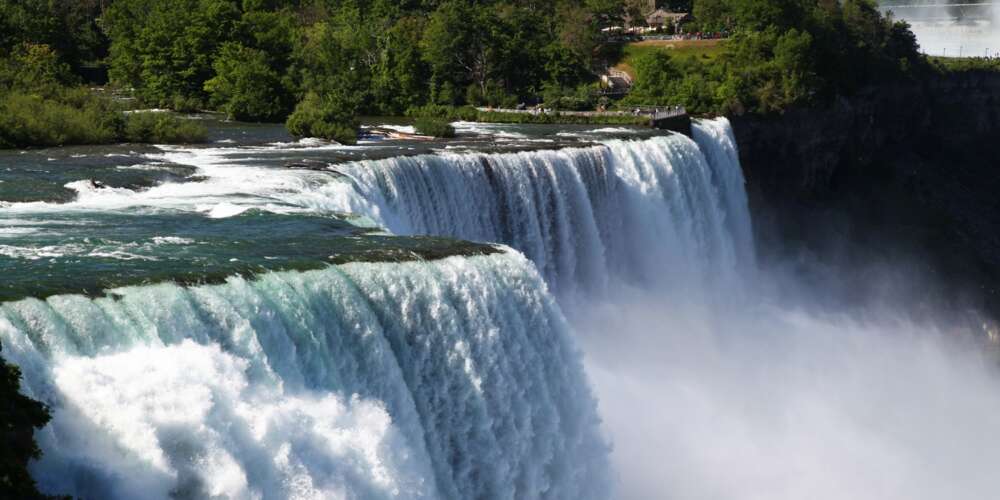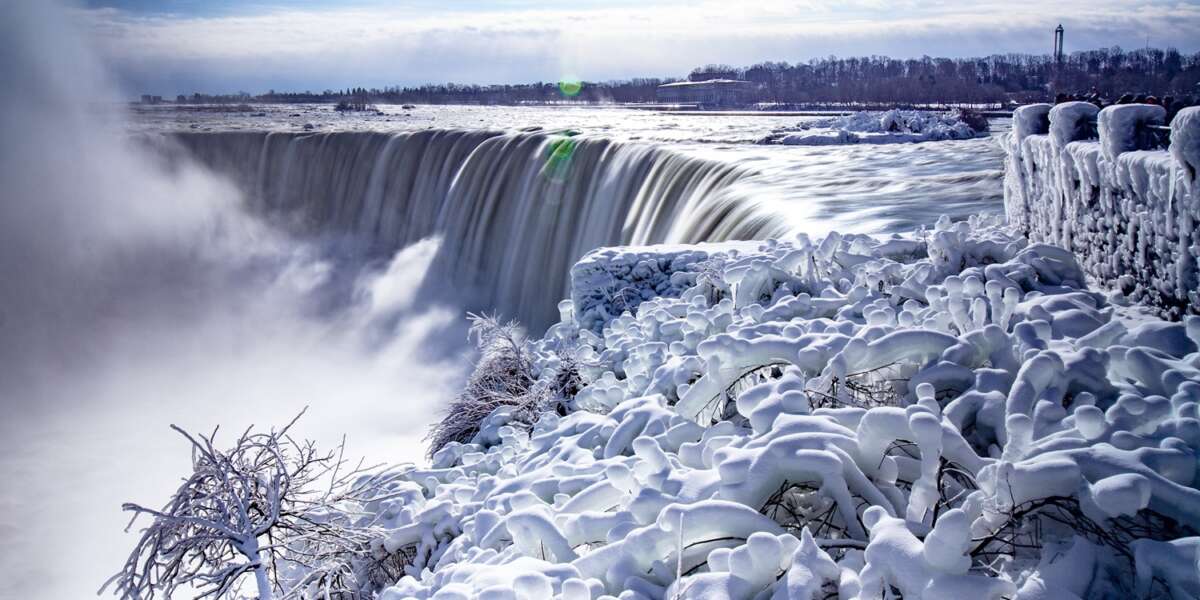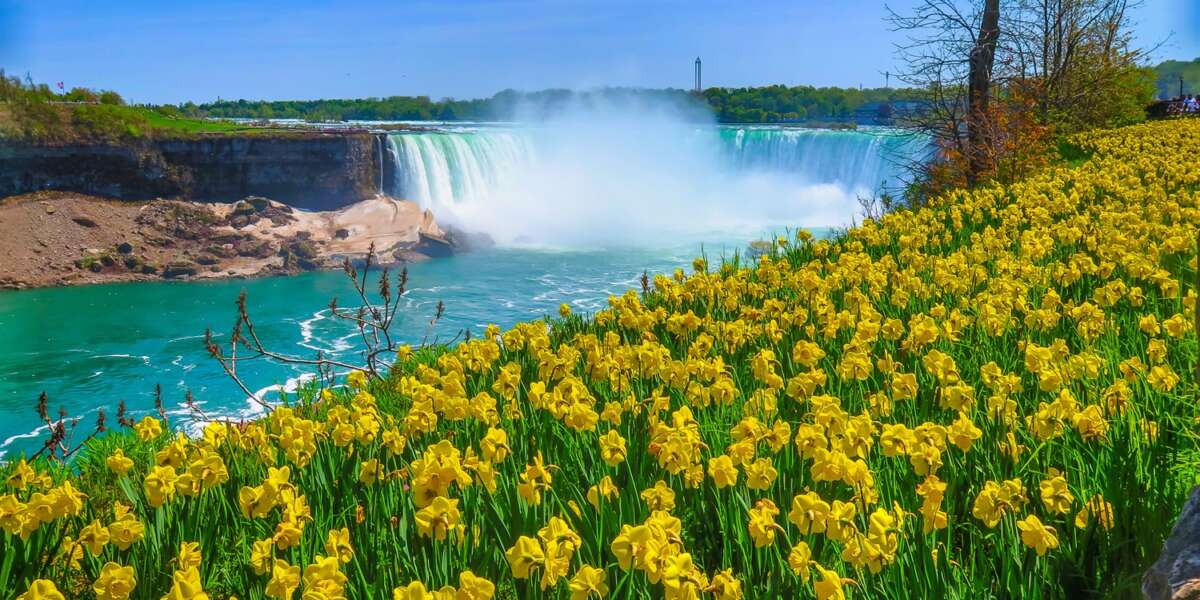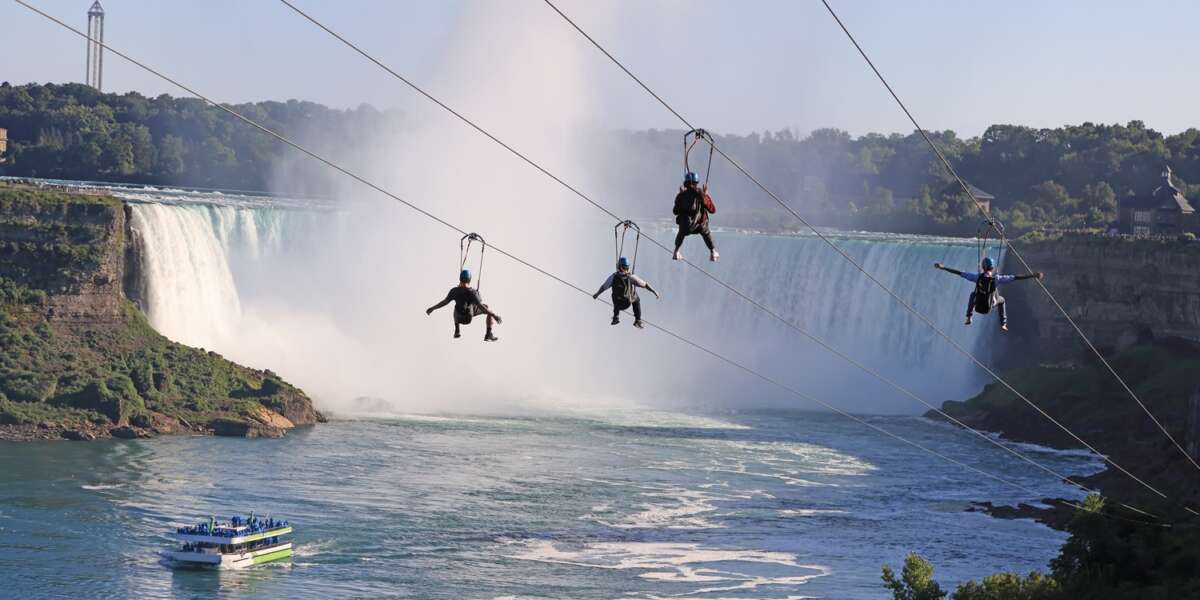
Niagara Falls, one of the most breathtaking natural wonders of the world, is a source of fascination for scientists and tourists alike. This majestic waterfall is not just a single entity but a combination of three separate waterfalls: the Horseshoe Falls, the American Falls, and the Bridal Veil Falls. Situated on the Niagara River, which drains Lake Erie into Lake Ontario, these falls form the southern end of the Niagara Gorge.
From a scientific perspective, the formation of Niagara Falls dates back approximately 12,000 years, a result of the Wisconsin glaciation. The retreat of the ice sheet left behind the Great Lakes and the Niagara River, which carved its way through the land to create the falls we see today. Interestingly, the falls are not static; they are constantly eroding and have moved approximately seven miles in the last 12,500 years.
Niagara Falls, a natural wonder that has captivated humans for centuries, is not only a marvel of the present but also a storyteller of the past. The geological history of Niagara Falls is as fascinating as its thunderous waters and misty rainbows.
The story of Niagara Falls began over 600 million years ago when the area that would become the Great Lakes was part of a broad, shallow sea that covered much of North America. The sedimentary layers that formed in this sea would eventually become the bedrock of Niagara Falls.
Fast forward to around 300 million years ago, the inland sea had receded, leaving behind a thick layer of sediments atop the ancient Canadian Shield. This period saw the rise of the Appalachian Mountains, altering the landscape and the flow of rivers, which in turn laid down the foundations for the future falls.
The most defining moment in the falls’ history came with the Wisconsin glaciation, the last ice age, which ended approximately 12,000 years ago. As the glaciers retreated, they carved out the Great Lakes and the Niagara River. The river, seeking a path to the Atlantic, found its way over the Niagara Escarpment, giving birth to the falls as we know them today.
The falls have since been a site of continuous natural engineering. The rock layers from the Silurian Period, nearly horizontal and dipping southward, consist of hard dolomite atop softer shale. The relentless force of the water slowly dissolves the dolomite and rapidly erodes the shale, causing blocks of dolomite to fall and maintaining the falls’ vertical drop.
This geological dance has not been without its consequences. The falls have receded approximately seven miles over the last 12,500 years, a testament to the power of natural forces at work. Today, the clear waters of the falls, free from sediment, continue to shape the landscape, creating a spectacle that is both a geological wonder and a testament to the dynamic nature of our planet.
Niagara Falls is more than just a destination; it’s a living, evolving geological history book, inviting us to witness the Earth’s incredible capacity for change and beauty. Whether cloaked in the icy stillness of winter or roaring with the full force of spring meltwater, the falls remind us of the planet’s ancient past and ever-changing present.
The flow rate of Niagara Falls is another point of interest. With more than 700,000 gallons of water per second cascading over its crestline, it’s estimated to have the highest flow rate of any waterfall in the world. This immense volume of water creates a natural whirlpool in the Niagara Gorge, which can change direction based on the water’s flow.
The appearance and characteristics of Niagara Falls can vary significantly with the seasons.

Niagara Falls in winter
In the winter, the falls can transform into a frozen wonderland, with the mist from the falls creating ice formations along the riverbanks. Despite the cold, this season offers a unique beauty, with the snow-covered falls presenting a serene and picturesque scene.

Yellow Flowers Niagara Falls
Spring brings a renewal of life, with the melting snow and ice increasing the flow of the falls and contributing to a more powerful and voluminous cascade. This season is also a time for new flora to bloom around the gorge, adding to the scenic beauty of the area.
The bright yellow flowers you’re likely referring to near Niagara Falls are **daffodils**. Niagara Falls is known as the “Daffodil Capital of North America” due to the spectacular display of over one million blooming daffodils⁴. These flowers typically bloom throughout April, with their peak usually occurring in mid-April⁴.
You can find large patches of daffodils by the Canadian Horseshoe Falls, along the bank in Queen Victoria Park from Clifton Hill to Murray Street, and in other areas throughout Niagara Parks³.
Have you had the chance to visit Niagara Falls during the daffodil bloom? 🌼
Bron: Gesprek met Copilot 16/10/2024
(1) The Best Summer Blooms in Niagara Falls. https://www.niagarafallstourism.com/blog/the-best-summer-blooms-in-niagara-falls/.
(2) What’s in Bloom | Flowers in Bloom Niagara Falls – Niagara Parks Commission. https://www.niagaraparks.com/visit-niagara-parks/nature-gardens/whats-in-bloom/.
(3) . https://bing.com/search?q=yellow+flowers+near+Niagara.
(4) Bloomers Flower & Gift Market. https://www.bloomersniagara.com/.
(5) Where to See the Spring Blooms in Niagara Falls – In Search of Sarah. https://insearchofsarah.com/best-spring-blooms-niagara-falls/.
_________________________

Niagara Zipline Summer
Summer is the peak tourist season, offering warm temperatures and full operational status for the attractions around the falls. The mist and breezes from the waterfalls provide a refreshing respite from the heat. The summer months also allow for a variety of outdoor activities and events in the surrounding region.

A view of the American Falls in the Fall, taken with a long exposure
Autumn at Niagara Falls is a time of vibrant colors, as the foliage turns into a palette of reds, oranges, and yellows. The cooler temperatures and diminishing crowds make this a pleasant time to visit, with the falls set against the backdrop of the colorful leaves.
Determining the best time to visit Niagara Falls depends on personal preferences. For those seeking a full experience with all attractions open and don’t mind the crowds, June to August is ideal. However, if one prefers fewer tourists and milder weather, the shoulder seasons of spring and fall may be more appealing.
For budget-conscious travelers, the off-season from November through January offers the cheapest rates, though it comes with colder temperatures. Regardless of the season, Niagara Falls presents a unique and awe-inspiring spectacle, with each season offering its own charm and array of activities.
In conclusion, Niagara Falls is not only a geological marvel but also a testament to the dynamic nature of our planet. Its scientific significance and seasonal transformations make it a destination worth visiting year-round, each visit promising a different experience from the last.
References:
: The Fact File
: Live Science
: Niagara Falls Canada
: Niagara Falls USA
: Upgraded Points
: Travellers Worldwide
Leave a Reply